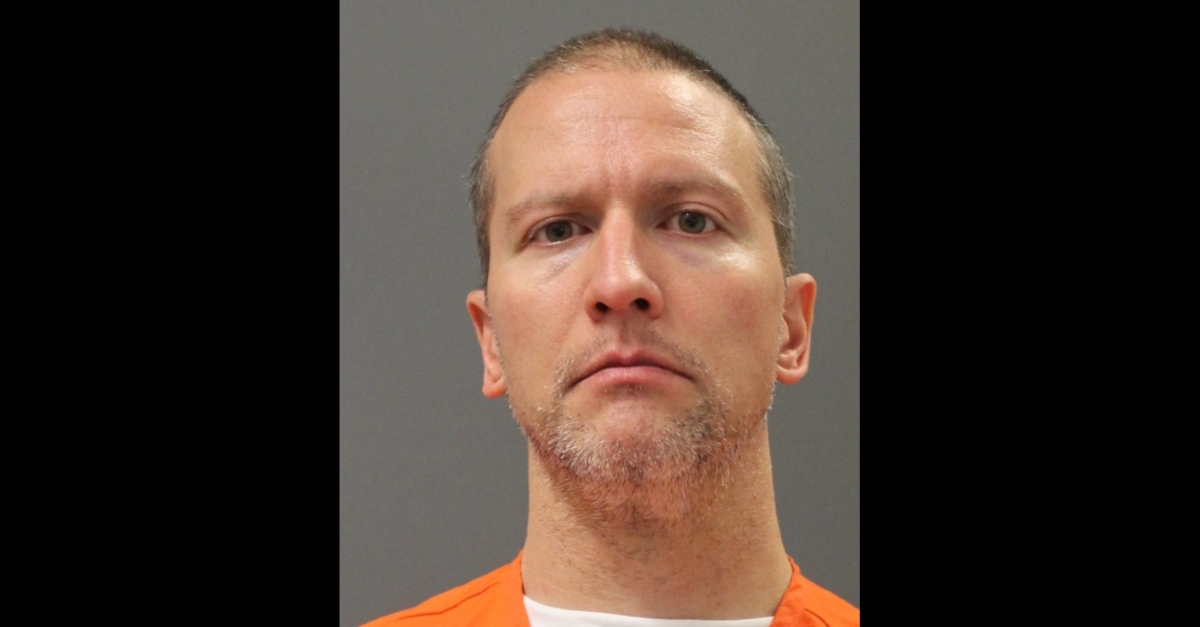
State prosecutors in Minnesota filed a notice of intent on Thursday to cite eight other instances of forcible restraint as evidence against former Minneapolis police officer Derek Chauvin, who faces charges of second-degree murder, third-degree murder and manslaughter in George Floyd’s death.
The filing from Minnesota Attorney General Keith Ellison (DFL) and Assistant Attorney General Matthew Frank explains that the evidence is meant to rebut potential claims from the defense that Chauvin “did not intentionally assault Mr. Floyd in a manner inconsistent with training.”
Chauvin and fellow former officers Tou Thao, Thomas Lane and J. Alexander Kueng were recorded by members of the public and surveillance cameras restraining Floyd on the street on May 25, 2020. Chauvin and his co-defendants “placed the victim George Floyd, who was already handcuffed, in a prone position on the ground.”
Chauvin kept his knee on Floyd’s neck for 7 minutes and 46 seconds, prosecutors have clarified.
“Defendant placed one knee on Mr. Floyd’s neck and upper back area and shifted his body weight onto Mr. Floyd’s neck, rendering Mr. Floyd unconscious,” the filing said. “Defendant continued to restrain Mr. Floyd in this position beyond the point when such force was needed under the circumstances, causing Mr. Floyd’s death.”
The state notified Chauvin’s attorney Eric Nelson that it intends introduce evidence of prior incidents involving restraint to prove Chauvin’s “knowledge; intent; common scene or plan; absence of a justifiable mistake, accident, misunderstanding; and state of mind at the time of the crime [against Floyd].”
The incidents cited occurred between 2014 and 2019. In 2017, Chauvin is said to have restrained a woman by “placing his knee on her neck while she laid in prone position on the ground”; various other examples of neck restraints (and the kicking of a suspect) were summarized:
On March 15, 2014, Defendant restrained an arrested male by placing his body weight on the male’s upper body and head area as the male laid in the prone position on the ground. Defendant reported that he used this restraint to control the male’s movements and to place the male in handcuffs. See MPD CCN 2014- 082863.
2. On February 15, 2015, Defendant restrained an arrested male by applying pressure to the male’s lingual artery below the male’s chin bone and pressing the male against a wall. Defendant then pulled the male to the ground, placed him in a prone position, and placed handcuffs on the male. Defendant kept the male handcuffed in the prone position until other officers arrived to aid him in placing the male in a squad car. See MPD CCN 2015-054320.
3. On August 22, 2015, Defendant participated in rendering aid to a suicidal, intoxicated, and mentally-disturbed male. Defendant observed other officers fight with and tase the male. Defendant then observed other officers place the male in a side-recovery position, consistent with training. Defendant rode with the male to the hospital to receive medical care. Officers involved in the response received a commendation for their appropriate efforts and received feedback from medical professionals that, if officers had prolonged their detention of the male or failed to transport the male to the hospital in a timely manner, the male could have died. See MPD CCN 2015-317385.
4. On April 22, 2016, Defendant restrained an arrested male by placing both of his hands around the male’s neck and applying pressure to both sides of the male’s neck. Defendant then forced the male backwards onto the sidewalk and handcuffed him. After Defendant placed the male in handcuffs, he stood the male up. Defendant’s actions resulted in a small crowd of concerned citizens to view Defendant’s actions. The male later complained of asthma, and paramedics were called to the scene. See MPD CCN 2016-141710.
5. On June 25, 2017, Defendant restrained an arrested female by placing his knee on her neck while she laid in prone position on the ground. Defendant shifted his body weight onto the female’s neck and continued to restrain the female in this position beyond the point when such force was needed under the circumstances. See MPD CCN 2017-235836.
6. On September 4, 2017, Defendant detained an arrested juvenile by applying a neck restraint, flipping the juvenile on his stomach, and pinning him to the floor. Defendant continued to restrain the juvenile in this position beyond the point when such force was needed under the circumstances. See MPD CCN 2017- 337738.
7. On March 12, 2019, Defendant detained an intoxicated male on the ground by applying a neck restraint on the male while sitting on the male’s lower back. Defendant continued to restrain the male in this position beyond the point when such force was needed under the circumstances. See MPD 2019-71230.
8. On July 6, 2019, defendant kicked an intoxicated male in the midsection and then applied a neck restraint on the male until the male was rendered unconscious. Defendant continued to restrain the male in this position beyond the point when such force was needed under the circumstances. See MPD 2019-19749.
The Minnesota Attorney General’s Office said that it has photo, video and testimonial evidence to support the above-described arrests. Prosecutors said that they will, at a later date, file a memo to formally argue in favor of allowing this to be used as evidence at trial.
[Image via Minnesota Department of Corrections]